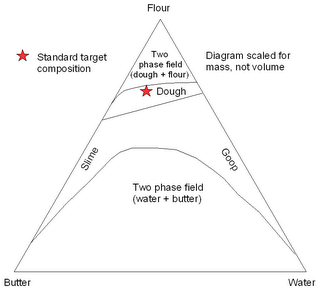Over in Cocktail Party Physics, Jennifer has been complaining about boys’ propensity to measure their self-worth by the heat of their girlfriends. Meanwhile, Janet, Tara, and their commenters seem to be confused about how the heat of a chickybabe can be properly and scientifically defined.
The definition, quantification, and calculation of heat was one of the most enduring and important scientific discoveries of the 19th century. For those unfamiliar with it, I will provide a brief historical synopsis of the quantification of hot chicks, and the development of the theory with which this value, Q, can be calculated. Finally, by using Gibbs' free energy, I will explain why young males are so insistent on maximizing the Q of their girlfriends.
The first attempts to rigorously define female attractiveness were done by the well known, and heavily idolized, Heat Engine. Heat Engine was a 19th century boy band with the following members:
- Rudolf Clausius: bass
- Emile Clapeyron: percussion
- Sadi Carnot: vocals
- Hermann Helmholtz: calorimeter
Like most boy band members, these four engineers possessed limited musical skill, and vast teenage lust. However, because lip-synching had not been invented in the 19th century, the boyz had to find a different mechanism with which to reconcile their talent with their testosterone. This is why they invented thermodynamics.
The original thermodynamic equations and models were invented to explain the inefficiencies inherent in translating musical prowess into sexual activity. In his seminal
paper single
Réflexions sur la puissance motrice du feu( in English,
How to get laid without playing an encore), Sadi Carnot proved that there was a maximum theoretical efficiency- about 40%- for the procurement of sex via musical activity. While this seemed fairly alarming given their meager talent, it was actually a ten-fold increase on the hottest touring bands of the time.
Although that hit single was enough to immortalize Heat Engine, Rudolf Clausius one-upped his lead vocalist by composing the
formula album
dQ=dW+dE
In otherwords, the change in heat equals the work done plus the change in energy. This allowed mathematical confirmation of the empirical observation that hardworking, energetic chicks were hot. This simple, wholesome German formulation attracted little notice. However, his followup formulation, dQ=TdS, was considered obscene, and fell off the charts in three weeks.
Clausius and Emile Clapeyron went on to produce many successful duets on numerous seductive properties. These included the platinum selling “Second law of thermodynamics”, the irreversibly splendid “Entropy”, and an equation, named after themselves, that described the energy spent and entropy gained in changing phase or shedding clothes. They then tackled the thermodynamic concept that broke up the band, adiabatic cooling.
Carnot insisted that when a body expanded, she became less hot, a process that he described as adiabatic cooling. While the other three were in a jam session working out the instrumentals for this theory, he leaked it to the public, thus creating the multi-million dollar fashion, diet, and beauty industries, all based on the principle that denser is hotter.
Helmholtz and Clausius were both married to stout German hausfrauen by this time. When they found out about Carnot’s betrayal, they got all loga-rhythmic on his ass. In a blistering rush of calculus and musical genius, they proved that despite the change in temperature, adiabats not only conserved heat, but were also isentropic, and therefore reversible. Alas, the same did not hold for Carnot’s career, and he was banished from the band, dying from an STD on the streets of Paris later that year.
Unfortunately, by that time the myth of adiabatic cooling was firmly entrenched in the public imagination, and even a lurid refutation was not enough to change public opinion. The German prediction of heat conservation was confirmed near the end of the century in a shocking thermodynamic experiment. A deranged Italian highway engineer tried to increase the heat of half a dozen schoolgirls, by attempting to adiabatically compress them. Unfortunately, he used a steamroller to do so, which resulted in an irreversible, entropy-gaining densification to cardboard thickness. However, in the enquiry that followed, it was shown that the highly compressed corpses were in fact no hotter that the original schoolgirls had been before the attack. Sadly, the thermodynamic implication of this case was not one of the angles most heavily featured in the tabloids, so the myth survived unscathed.
Back in the 19th century, with Heat Engine’s future in jeopardy following the expulsion of Carnot, the three remaining musicians turned to an American talent to revive their fortunes.
Josiah “Big Willie” Gibbs was an American soloist who started his own hot chick research program in the most unlikely city of New Haven. While his tour with Heat Engine started with promise, he and Helmholtz eventually developed irreconcilable differences. Helmholtz, a dietician, performed with constant volume, while the American insisted on singing with pressure that didn’t change.
This was the end of the band, with Hermann and Rudolf retiring to Germany to spend time with family. Emile, devastated by the split, spent the rest of his days endlessly repeating calculations for ideal gasses, using a blowup doll and a thermal probe. Big Willie returned to America.
While Big Willie is the namesake of Gibbs Free Energy, the concept was actually invented by his long-suffering sister.
Big Willie was a life-long bachelor, and used the family home as a party pad even while his sister and her husband tried to raise a family there. Distraught by Gibbs’ exploits, his sister Julia derived the formula that bears Big Willie’s name with the express purpose of minimizing what she constantly referred to as “Gibbs’ Free Energy”. She naively gave Big Willie the broadcast rights to the formula, hoping that it would perhaps give her some peace and quiet around the house.
What Julia didn’t realize was this:
Although she, as a stable married woman, wished to minimize G, BigWillie was leading a lifestyle as energetic and unstable as possible. The main way he did this was to invent amphetamines, so that he could turn his concerts into ecstasy raves. By covering Clausius’s failed album with a new, psychedelic sound, Gibbs took Q=TdS to a whole new level, as his pharmacological supplements increased both the body temperature and the disorder of the girls who partook.
Julia originally defined Gibbs Free Energy as follows:
G=TdS-PdV
Gibbs merely substituted dQ for TdS, and work for PdV, to live the following lifestyle:
G = heat – work
For a young, unstable bachelor like Big Willie, the method of maximizing G was simple. Maximize heat, and minimize work. In plain English, get the hottest chick for the least effort. Young hotheads have followed in his steps ever since. So when you see a whispy-cheeked studmuffin taking his gorgeous hottie for granted, he isn’t being misogynist, or cruel; he’s just using thermodynamics. By maximizing his chemical potential, he hopes that his reactivity will be enhanced.










